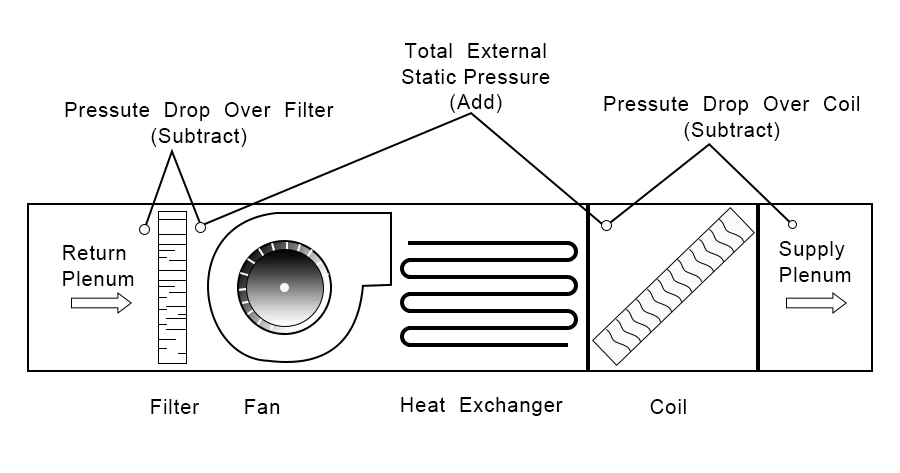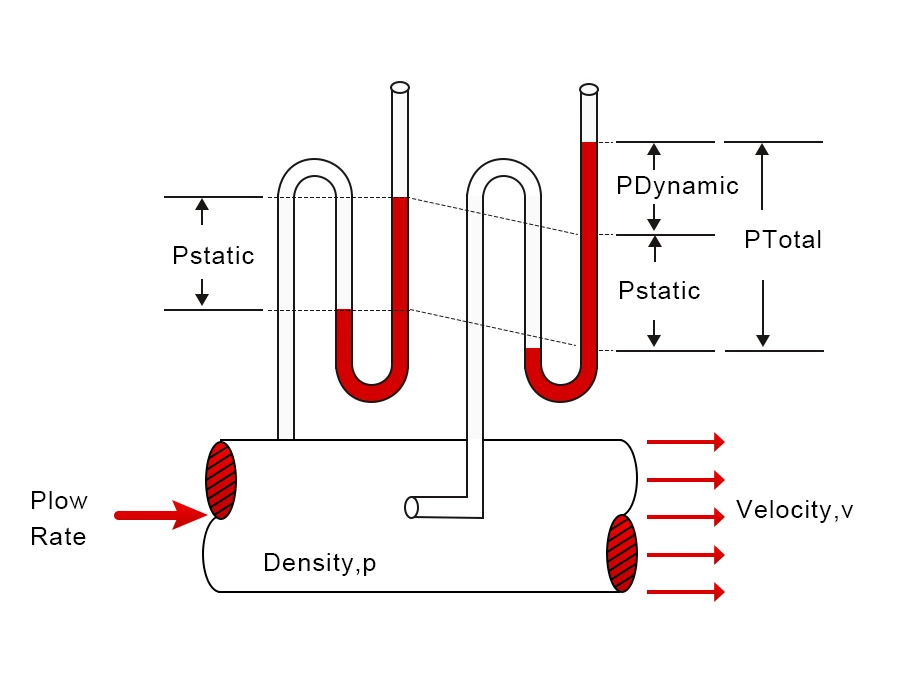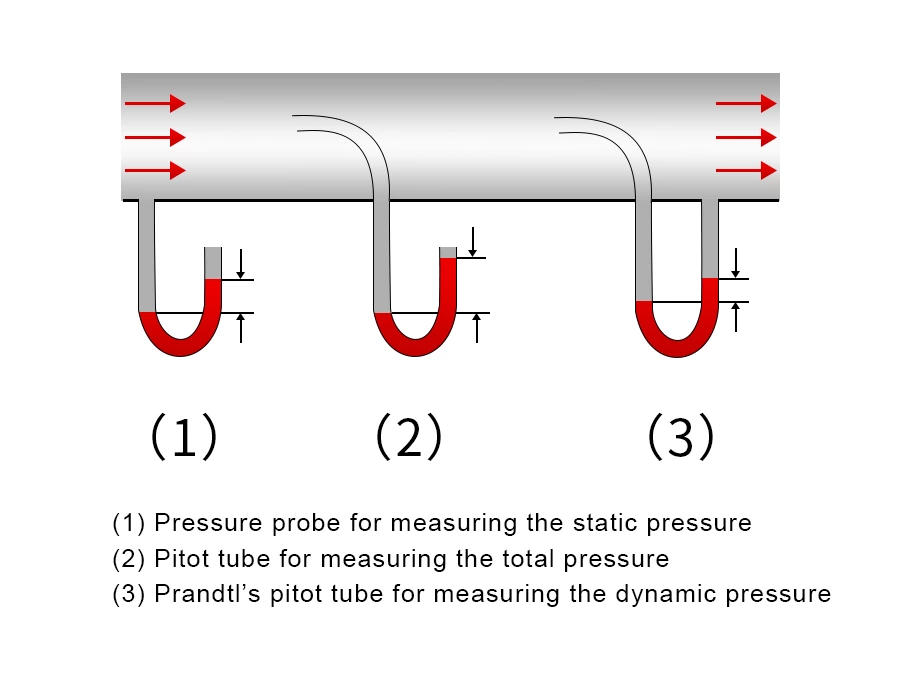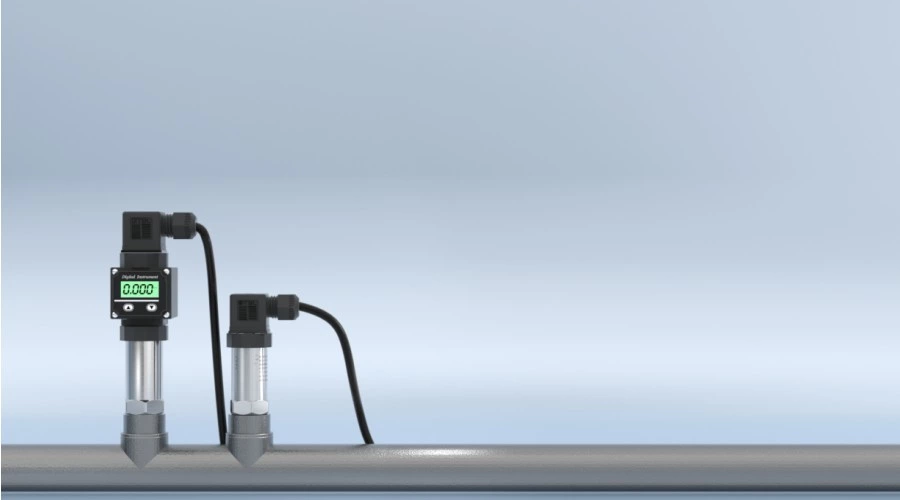Static Pressure Vs. Dynamic Pressure Vs. Total Pressure
What is Static Pressure?
Static pressure is a fundamental concept in fluid mechanics that refers to the pressure exerted by a fluid when it is at rest or moving at a constant velocity. It is called "static" pressure because it does not account for the dynamic effects of fluid motion, such as changes in velocity or acceleration.
Static pressure arises from the random motion and collisions of molecules within a fluid. As these molecules collide with the walls of a container or a surface, they exert a force perpendicular to the surface. The cumulative effect of these molecular collision results in the static pressure.
In practical terms, static pressure can be thought of as the pressure exerted by a fluid on a solid surface, such as the walls of a pipe or the surface of an object immersed in a fluid. It is an important parameter in various fields, including engineering, aerodynamics, and HVAC (heating, ventilation, and air conditioning) systems.
Static pressure is typically measured in units of force per unit area, such as pascals (Pa) or pounds per square inch (psi). It is influenced by factors such as fluid density, height of the fluid column (in cases where gravity is involved), and the geometry of the system.
Understanding static pressure is crucial in engineering applications to ensure proper fluid flow, structural integrity, and system performance. It is often considered alongside other types of pressure, such as dynamic pressure (related to fluid motion) and total pressure (the sum of static and dynamic pressures), to analyze and design fluid systems effectively.

What is Dynamic Pressure?
The dynamic pressure is a concept in fluid mechanics that represents the pressure exerted by a fluid due to its motion or velocity. Unlike static pressure, which accounts for the pressure at rest, dynamic pressure considers the impact of fluid movement.
When a fluid flows or moves, it possesses kinetic energy associated with its velocity. This kinetic energy is converted into dynamic pressure, which represents the additional pressure exerted by the fluid due to its motion. The dynamic pressure can be understood as the pressure increase that would occur if the fluid were to be abruptly brought to rest.
The dynamic pressure is influenced by the density of the fluid and the square of its velocity. As the fluid velocity increases, the dynamic pressure also increases exponentially. This relationship is described by Bernoulli's equation, which relates the static pressure, dynamic pressure, and total pressure (the sum of static and dynamic pressures) in a fluid flow system.
Dynamic pressure is an important parameter in various applications, including aerodynamics, hydraulics, and fluid dynamics. It helps in analyzing and predicting fluid behavior, such as the forces exerted on objects moving through a fluid, the performance of fluid machinery, and the design of aerodynamic surfaces and structures.
In engineering and physics, dynamic pressure is often measured in units of force per unit area, such as pascals (Pa) or pounds per square inch (psi). Understanding dynamic pressure is crucial for designing efficient and safe fluid systems, optimizing vehicle performance, and ensuring structural integrity in applications where fluid motion plays a significant role.
What is Total Pressure?
Total pressure, also known as stagnation pressure or pitot pressure, is a concept in fluid mechanics that represents the sum of the static pressure and the dynamic pressure of a fluid flow. It is called "total" pressure because it takes into account both the pressure at rest and the pressure due to fluid motion.
Total pressure accounts for the fact that when a fluid is in motion, its kinetic energy contributes to the overall pressure. In addition to the static pressure (pressure at rest), which arises from the molecular collisions within the fluid, the dynamic pressure (pressure due to fluid motion) adds to the total pressure.
The total pressure is often measured using a device called a Pitot tube, which consists of a tube facing into the fluid flow. The Pitot tube has one opening facing upstream to measure the stagnation or total pressure and one or more additional opening facing perpendicular to the flow to measure the static pressure. By subtracting the static pressure from the total pressure, the dynamic pressure can be determined.
The total pressure is a crucial parameter in various fluid flow applications, such as aerodynamics, hydraulics, and HVAC systems. It is used to calculate parameters like fluid velocity, volumetric flow rate, and energy losses in a system. The total pressure is also used to determine the efficiency of fluid machinery, evaluate the performance of aircraft and vehicles, and design ventilation and air conditioning systems.
In engineering and physics, the total pressure is typically measured in units of force per unit area, such as pascals (Pa) or pounds per square inch (psi). By considering both static and dynamic pressures, total pressure provides a comprehensive understanding of the pressure conditions in a fluid flow, enabling accurate analysis, design, and optimization of fluid systems.

The Difference Between Static Pressure, Dynamic Pressure And Total Pressure
In the field of fluid mechanics, it is important to understand the differences between static pressure, dynamic pressure, and total pressure. Static pressure is the pressure exerted by a fluid when it is at rest. It is measured perpendicular to the surface of the fluid and is independent of the direction of flow. On the other hand, the dynamic pressure is the pressure exerted by a fluid when it is in motion. It is measured parallel to the direction of flow and is dependent on the velocity of the fluid.
Total pressure, also known as stagnation pressure, is the sum of static pressure and dynamic pressure. This is the maximum pressure that a fluid can exert on an object when it is brought to a complete stop. The total pressure is measured using a pitot tube, which is a device that measures the velocity of a fluid and converts it into pressure.
Understanding these three types of pressures is crucial in various applications such as aerodynamics, hydraulics, and ventilation. For example, in aerodynamics, static pressure is used to measure air pressure inside an aircraft cabin while dynamic pressure is used to calculate the lift force acting on an airplane wing. The total pressure is used to measure airspeed and altitude.
In hydraulics, static pressure is used to measure the pressure in a pipeline while dynamic pressure is used to calculate the flow rate of a fluid. The total pressure is used to measure the efficiency of a hydraulic system.
In ventilation systems, static pressure is used to measure the resistance of an air duct while dynamic pressure is used to calculate the airflow rate. The total pressure is used to measure the efficiency of a ventilation system.

Dynamic Pressure Calculator
To calculate dynamic pressure, you need to know the fluid density and the velocity of the fluid. Here's the formula to calculate dynamic pressure:
Dynamic Pressure (q) = 0.5 * Density (ρ) * Velocity² (v²)
Where:
- Dynamic Pressure (q) is the pressure due to fluid motion.
- Density (ρ) is the density of the fluid.
- Velocity (v) is the velocity of the fluid.
To use the calculator, simply input the values of fluid density and velocity, and it will calculate the dynamic pressure for you. Here's an example:
Example:
Density (ρ) = 1.2 kg/m³
Velocity (v) = 10 m/s
Using the formula:
Dynamic Pressure (q) = 0.5 * 1.2 * (10²)
Dynamic Pressure (q) = 0.5 * 1.2 * 100
Dynamic Pressure (q) = 60 Pa
Therefore, the dynamic pressure in this example is 60 Pascal (Pa).
Keep in mind that the units used for density and velocity should be consistent (e.g., kg/m³ for density and m/s for velocity) to obtain the correct units for dynamic pressure.
What Is A Dynamic Pressure Sensor?
A dynamic pressure sensor is a device used to measure the pressure exerted by a fluid due to its motion or velocity. It is specifically designed to accurately capture and quantify the dynamic pressure in a fluid flow.
Dynamic pressure sensors utilize various sensing technologies to convert the pressure into an electrical signal that can be measured and analyzed. Some common types of dynamic pressure sensors include piezoelectric sensors, piezoresistive sensors, and capacitive sensors.
Piezoelectric sensors operate based on the principle of the piezoelectric effect, where certain materials generate an electrical charge when subjected to mechanical stress. When the fluid flow exerts pressure on the piezoelectric sensor, it generates an electrical charge proportional to the dynamic pressure.
Piezoresistive sensors, on the other hand, employ the property of certain materials to change their electrical resistance in response to mechanical strain. These sensors contain piezoresistive elements that deform under fluid pressure, causing a change in resistance, which can be measured and correlated to the dynamic pressure.
Capacitive sensors utilize changes in capacitance to measure pressure. These sensors consist of a diaphragm that deforms with fluid pressure, leading to a variation in the separation between capacitor plates. This change in capacitance is then detected and converted into an electrical signal representing the dynamic pressure.
Dynamic pressure sensors find application in various fields, including aerospace, automotive, HVAC, wind tunnels, and fluid dynamics research. They are used to analyze fluid flow behavior, monitor performance in fluid systems, measure aerodynamic forces, and optimize designs for efficient and safe operation.
It is important to select a dynamic pressure sensor suitable for the specific application, considering factors such as pressure range, accuracy, response time, environmental conditions, and compatibility with data acquisition systems. Manufacturers and suppliers offer a range of dynamic pressure sensors tailored for different requirements.
Applications Of Dynamic Pressure Sensors
Dynamic pressure sensors have numerous applications across various industries where the measurement of pressure due to fluid motion is critical. Some common applications of dynamic pressure sensors include:
1. Aerodynamics and Wind Tunnel Testing: Dynamic pressure sensors are used to measure the air pressure exerted on aircraft wings, fuselages, and other aerodynamic surfaces during wind tunnel testing. This data helps in analyzing and optimizing the aerodynamic performance of aircraft and spacecraft.
2. Automotive Testing: Dynamic pressure sensors play a crucial role in automotive applications such as airflow measurements, intake and exhaust system analysis, combustion analysis in engines, and tire aerodynamics. They help in evaluating vehicle performance, fuel efficiency, and optimizing design for better aerodynamics.
3. HVAC (Heating, Ventilation, and Air Conditioning) Systems: Dynamic pressure sensors are used to monitor and control airflow in HVAC systems. They help ensure efficient ventilation, maintain proper air distribution, and optimize energy consumption in heating and cooling processes.
4. Fluid Dynamics Research: Dynamic pressure sensors are extensively used in research and development of fluid dynamics, including studies of fluid flow behavior, turbulence, and fluid structure interactions. They provide valuable data for validating computational fluid dynamics (CFD) models and improving understanding of fluid phenomena.
5. Gas and Liquid Flow Measurement: Dynamic pressure sensors are employed in various industries to measure and monitor gas and liquid flow rates. They are used in pipelines, industrial processes, and flow meters to ensure accurate and efficient flow measurements.
6. Aerospace and Defense: Dynamic pressure sensors find applications in aerospace and defense systems for measuring airspeed, altitude, and dynamic pressure in aircraft, rockets, missiles, and unmanned aerial vehicles (UAVs). They contribute to flight safety, navigation, and performance evaluation.
7. Environmental Monitoring: Dynamic pressure sensors are utilized in environmental monitoring systems to measure wind speed, air pressure, and atmospheric conditions. They assist in weather forecasting, climate studies, and environmental research.
8. Fluid Machinery and Turbines: Dynamic pressure sensors are employed in monitoring and controlling fluid machinery and turbines. They provide valuable data for optimizing efficiency, detecting abnormalities, and ensuring safe and reliable operation.
These are just a few examples of the wide-ranging applications of dynamic pressure sensors. Their versatility and accuracy make them essential tools in industries that rely on precise pressure measurements to optimize processes, enhance performance, and ensure safety.
What Is A Static Pressure Sensor?
A static pressure sensor is a device designed to measure the static pressure exerted by a fluid when it is at rest or moving at a constant velocity. It is used to accurately measure the pressure at a specific point in a fluid system where there is no fluid motion.
Static pressure sensors employ various technologies to convert the static pressure into an electrical signal that can be measured and analyzed. Some common types of static pressure sensors include strain gauge sensors, capacitive sensors, and piezoresistive sensors.
Strain gauge sensors utilize the principle of strain-sensitive elements that change their electrical resistance when subjected to mechanical stress. These sensors consist of a diaphragm or membrane that deforms under static pressure, causing strain on the strain gauges. The change in resistance is measured and correlated to the static pressure.
Capacitive sensors use changes in capacitance to measure static pressure. These sensors have a diaphragm or membrane that deforms under fluid pressure, resulting in a variation in the separation between capacitor plates. The change in capacitance is then detected and converted into an electrical signal representing the static pressure.
Piezoresistive sensors employ materials that change their electrical resistance in response to mechanical strain. These sensors contain piezoresistive elements that deform under fluid pressure, leading to a change in resistance. This change is measured and converted into an electrical signal proportional to the static pressure.
Static pressure sensors find applications in various industries and systems where precise measurement of static pressure is crucial. Some common applications include HVAC systems, cleanrooms, pneumatic systems, medical devices, industrial processes, and building automation. They are used to ensure proper fluid flow, optimize energy consumption, monitor system performance, and maintain safety and efficiency in various applications.
When selecting a static pressure sensor, factors such as pressure range, accuracy, temperature sensitivity, response time, and compatibility with data acquisition systems should be considered to ensure reliable and accurate measurements.
What Is The Difference Between Dynamic And Static Pressure Transducer?
The difference between a dynamic pressure transducer and a static pressure transducer lies in their respective capabilities to measure pressure in different fluid conditions.
1. Dynamic Pressure Transducer
A dynamic pressure transducer is specifically designed to measure the pressure exerted by a fluid due to its motion or velocity. It is capable of accurately capturing and quantifying the dynamic pressure in a fluid flow. Dynamic pressure transducers are typically used in applications where the fluid is in motion, such as airflow in wind tunnels, aerodynamics testing, automotive testing, and fluid dynamics research. These transducers are designed to respond to rapid changes in pressure and provide real-time measurements of dynamic pressure variations. They are commonly used in applications where the measurement of pressure fluctuations and rapid pressure changes is critical.
2. Static Pressure Transducer
On the other hand, a static pressure transducer is designed to measure the pressure exerted by a fluid when it is at rest or moving at a constant velocity. It is specifically used to measure static pressure in a fluid system where there is no fluid motion. Static pressure transducers are commonly used in applications such as HVAC systems, industrial processes, cleanrooms, and pneumatic systems. They are designed to accurately measure and monitor the pressure at a specific point in the system, providing steady and stable readings. Static pressure transducers are typically used to measure and monitor average pressure values in applications where the fluid is not in motion or is moving at a constant velocity.
In summary, the main difference between a dynamic pressure transducer and a static pressure transducer lies in their ability to measure pressure in different fluid conditions. Dynamic pressure transducers are suitable for measuring pressure fluctuations and rapid pressure changes in fluid flow, while static pressure transducers are used to measure steady and stable pressure in static or constant flow conditions.




